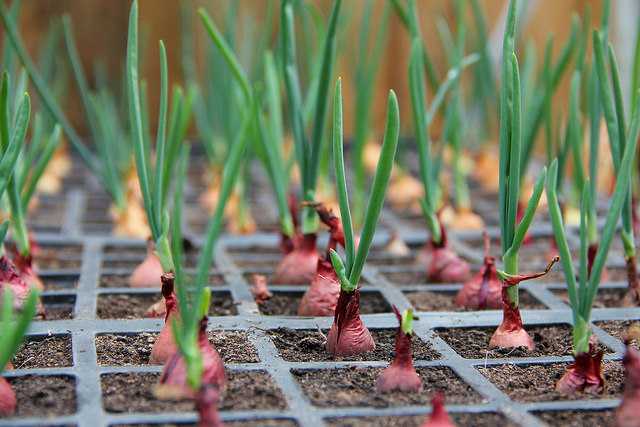
Onions are a cold-season crop which is relatively easy to grow because of their hardiness. It is recommended that you use onion sets, which can be planted without worry of frost damage. In addition, they have higher success rate than direct seed or transplants. Onions grow well on raised rows or raised beds at least four inches high.
If you ever wondered how onions grow you are not alone. As a part of the Allium family, onions are related to chives and garlic. They grow in layers, which are an extension of the leaves of the onion. The more leaves which are out of the top of the onion, the more inside the onion layers there are. This means that if you see lots of leaves, then you know you’re growing big onions.
When to plant
During late winter, start seeds of all types of onions indoors under bright fluorescent lights. You can also make additional sowings before early spring. It is recommended that you set out seedlings of non-bulbing onions 6 weeks before your last frost, and set out bulb onion seedlings 3 weeks before your last frost. You can also plant sets in spring, which are small, dormant onions. Compared to large sets, small sets produce better bulbs. Short-day varieties can be planted in fall in many mild winter areas. You should be ready to set out seedlings in mid-October.
How to plant
Choose a soil which is fertile and well-drained on a sunny site, and loosen the planting bed to at least twelve inches deep. You should mix in a one-inch layer of mature compost. Now, make V-shaped furrow (4-inch-deep) in the prepared bed. Fill the bottom of the furrow with a light dusting of dry organic fertilizer or one-inch of rich compost, and then water the prepared furrow. Depending on the mature size of the plants, set out seedlings or sets three to six inches apart.
Harvest and store
Once the bulbs have matured, the tops of bulb onion plants fall over naturally. When half of the tops in a planting have fallen over, lift all of the bulbs and then put the pulled plants in a place which is warm, dry and away from direct sunshine to cure. Cure short-day onions for several days and then clip off roots and tops before storing the onions in the refrigerator.
Cure long- and intermediate-day onions for 2 to 3 weeks. Clip off tops and roots when the onions feel paper-dry on the outside, and lightly brush off loose soil before storing the onions in a cool, dry place. Hang them in mesh bags or arrange them in a single layer. Onions which are properly cured will store for 6 to 8 months in a cool basement or root cellar. Make sure to check them every week to sniff out signs of spoilage.
Save seeds
Several of the alternative onions can be handled as perpetual crops by replanting bulbs or bulblets, or by digging and dividing them. Big bulb onion is grown from seed. Select three perfect onions and store them through winter in order to grow your own from an open-pollinated variety. You can replant them in early spring. Gather the heads in a paper bag after the plants bloom and black seeds begin to fall from the flower heads. Allow the seeds to air-dry for a couple of days before storing the largest seeds for up to 2 years.



